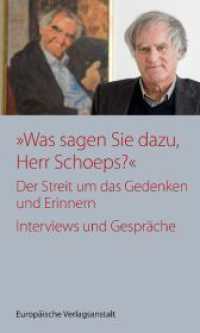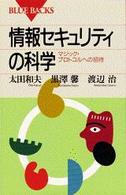Full Description
Tap into the Power of Child-Led Math Teaching and Learning
Winner of the 2022 Excel Silver Award for Technical Book. Everything a child does has mathematical value—these words are at the heart of this completely revised and updated third edition of The Young Child and Mathematics. Grounded in current research, this classic book focuses on how teachers working with children ages 3 to 6 can find and build on the math inherent in children's ideas in ways that are playful and intentional.
This resource
Illustrates through detailed vignettes how math concepts can be explored in planned learning experiences as well as informal spaces
Highlights in-the-moment instructional decision-making and child-teacher interactions that meaningfully and dynamically support children in making math connections
Provides an overview of what children know about counting and operations, spatial relations, measurement and data, and patterns and algebra
Offers examples of informal documentation and assessment approaches that are embedded within classroom practice
Deepen your understanding of how math is an integral part of your classroom all day, every day.
Includes online video!
Contents
Preface
About
this Edition
Our Theory
of Learning
Introduction
Everything
a Child Does Has Mathematical Value
Finding
and Building on the Mathematical Value
An Overview
of this Book
Engaging
with this Book
Chapter 1: Counting and Operations
Instructional Activity: Counting Collections
Exploring Children's Thinking: Counting
Exploring Children's Thinking: Operations
Assessing Children's Understanding
Counting and Operations in Informal Spaces
Conclusion
Chapter 2: Spatial Relations
Instructional
Activity: Describe-Draw-Describe
Exploring Children's Thinking: Describing Spatial
Relations
Exploring Children's Thinking: Representing Spatial
Relations
Assessing Children's Understanding
Spatial Relations in Informal Spaces
Conclusion
Chapter 3: Measurement and Data
Measurement
and Data in Informal Spaces
Instructional Activity: What Do You Notice?
Exploring Children's Thinking: Measurement
Exploring Children's Thinking: Data
Assessing Children's Understanding
Conclusion
Chapter 4: Patterns and Algebra
Exploring
Children's Thinking: Creating and Extending Patterns
Assessing Children's Understanding: Tea Party Patterns
Exploring Children's Thinking: Patterns in Counting
Assessing Children's Understanding: How High Can
Christopher Count?
Exploring Children's Thinking: Patterns and Algebra in
Storybooks
Assessing Children's Understanding: Storybook Patterns
Conclusion
Appendix A: A
Research Overview of What Young Children Know
What Young
Children Know: Counting and Operations
What
Young Children Know: Spatial Relations
What Young Children Know: Measurement and Data
What Young Children Know: Patterns and Algebra
Situating What a Child Knows
Appendix B: Using this Book to Support Professional Learning
Bringing
an Instructional Activity into Your Classroom
Making Connections Across Math
Content
Exploring Informal Spaces
Creating Classroom Spaces that
Support Participation
Connecting Classroom Practice to Research
Connecting Theory to Practice
Connecting to Policy and
Standards Documents
References
Index
Acknowledgments
About the Authors








